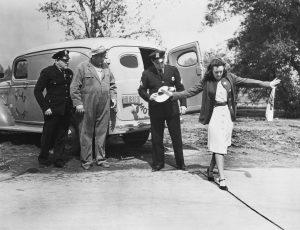
During a recent OVI jury trial, the judge and I disagreed about the function of standardized field sobriety tests (SFSTs). During a sidebar, I argued the tests do not measure driving impairment; they predict blood alcohol concentration (BAC). The judge’s opinion was SFSTs measure impairment of driving ability. The judge’s opinion prevailed, despite being wrong, because the judge’s opinion always prevails in the judge’s courtroom (unless and until an appellate court says otherwise). This particular judge is intelligent, well-intentioned, and better educated on DUI/OVI issues than most judges and lawyers. If this judge misunderstands the purpose of SFSTs, it’s a topic worth addressing.
A Very Brief History Of Standardized Field Sobriety Testing
Before the introduction of SFSTs, law enforcement officers used a variety of non-standardized tests to help them decide whether to arrest a person for drunk driving. Beginning in 1975, the National Highway Traffic Safety Administration (NHTSA), sponsored research which resulted in the development of standardized field sobriety tests. That research also led to the NHTSA manual: “DWI Detection And Standardized Field Sobriety Testing”.
Subsequent to the original publication of the manual, NHTSA conducted multiple validation studies. Those studies have evaluated the SFSTs in various environments and have examined multiple factors affecting the tests. The reports from the studies are clear: what’s being evaluated is the effectiveness of the SFSTs to predict BAC, not driving impairment.
The San Diego Study Makes It Crystal Clear
One of the most recent validation studies was conducted in San Diego in 1998. The San Diego study examined the validity of SFSTs for predicting BACs below .10. The report from that study clarifies this common misconception on pages 27-28:
Many individuals, including some judges, believe that the purpose of a field sobriety test is to measure driving impairment. For this reason, they tend to expect tests to possess “face validity,” that is, tests that appear to be related to actual driving tasks. Tests of physical and cognitive abilities, such as balance, reaction time, and information processing, have face validity, to varying degrees, based on the involvement of these abilities in driving tasks; that is, the tests seem to be relevant “on the face of it.” Horizontal gaze nystagmus lacks face validity because it does not appear to be linked to the requirements of driving a motor vehicle. The reasoning is correct, but it is based on the incorrect assumption that field sobriety tests are designed to measure driving impairment.
Despite The Clarity, The Misconception Continues
Just like the well-intentioned judge in my recent trial, many criminal justice professionals misunderstand the designed purpose of SFTs. Most lawyers and judges have not read the NHTSA studies but have read (at least parts of) the NHTSA manuals. The problem is the NHTSA manuals contain sloppy writing. In various parts of the NHTSA manuals, the writers use “impairment” as though it is synonymous with a BAC over .08. The two are not synonymous. In some places, the manuals contain conspicuous implications the SFSTs measure driving impairment. This is inaccurate writing on the part of the manuals’ authors, but it’s apparently good enough for government work.
The Misconception Matters
Picture a trial in which the defendant is accused of operating a vehicle ‘under the influence’ (impaired ability to operate the vehicle). In the trial, the government witness (the officer) and the government lawyer (the prosecutor) tell the jurors the defendant’s inability to stand on one leg has been proven by studies to indicate the defendant had an impaired ability to operate a vehicle. This statement is untrue and highly prejudicial to the defendant. A judge should not permit the jurors to be misled in this way.
I am not in favor of people driving under the influence of alcohol. I am, however, in favor of having a fair process to determine whether a person is guilty of doing so. Allowing the government to mislead jurors about SFSTs makes the process unfair.
 Columbus OVI/DUI Attorney Blog
Columbus OVI/DUI Attorney Blog

